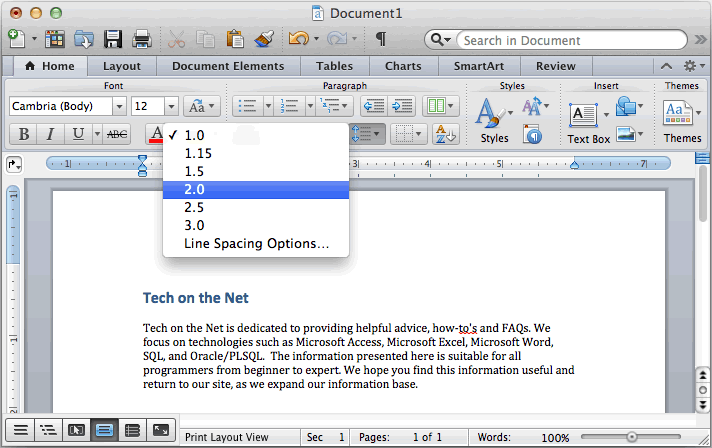Microsoft Word 2011 Mac Autosave
If your power goes out or your computer malfunctions when working on an Word for Mac 2011 document, all you have to do is open the application again. Word 2011 for Mac looks for and opens any AutoRecover files for the document(s) that you were working on when an unexpected crash occurred. Your document opens with “Recovered” appended to the filename. Choose File→Save As from the menu bar to restore the original filename and location.
BetterCloud Monitor June 20, 2016. To minimize the possibility of losing your work during a crash, here’s how to set your Microsoft Office documents to autosave every minute. This is a very fast save interval, but it will create an almost seamless backup history of your documents. For Mac: In Word.
Word for Mac can recover files that were open because, by default, Word autosaves your document every ten minutes while you’re working on it. If you want, you can change the save time interval within the AutoRecover setting as follows:
Choose Word→Preferences→Save from the menu bar.
Word’s Save preferences are displayed.
Change the number of minutes in the Save AutoRecover Info Every: [X] Minutes setting.
The default is 10 minutes. Entering a lower number saves more often, but you may notice Word is more sluggish when it saves so often. Entering a higher number may make Word perform better, but you may lose more changes if a power outage or computer crash occurs.
You can deselect this check box if you don’t want Word to save an AutoRecover file. You might do this for extremely large documents that take a long time to save. Of course, if you experience a power outage or computer crash, you will lose all your changes since the last time you manually saved the file.
You don’t need to select the Always Create Backup Copy check box. With AutoRecover and Time Machine, the bases are covered. The option is there only for backward compatibility.
Click OK when you’re finished.
Rarely, Word might not automatically display the AutoRecover file for the document(s) you were working on the next time you open Word. In that case, do the following in Word to open the AutoRecover file:

Choose File→Open from the menu bar.
Type AutoRecover or type a keyword or phrase in the Spotlight Search box in the top-right corner of the Open dialog.
Double-click the most recently saved AutoRecover file, or select the file and click Open. If you did a keyword or phrase search, use the Last Opened information to help you choose a likely file to open.
If the file you want is grayed-out, choose All Files in the Enable pop-up menu, which allows you to open any file type.
Auto Saved Documents
You can also use Mac OS X Time Machine to recover any file that you’ve saved at least once. When you use Word for Mac, it’s nearly impossible to lose more than a few minutes’ worth of work thanks to AutoRecover and Time Machine.
Office 2011 for Mac is full of useful features, including the autorecovery tool in Excel. Although crashes in Excel for Mac 2011 are extremely rare, it doesn’t hurt to make sure Excel 2011 is backing up your changes as you work. The following sections show you what to do to ensure Excel is making backups and how to retrieve the backup if you need to.
Setting up AutoRecover in Excel for Mac 2011
Take a moment to make sure your preferences automatically save an emergency backup file of your work. Before you do that, remember that AutoRecover is not a substitute for saving your files often! To set up AutoRecover, follow these steps:
Choose Excel→Preferences from the menu bar.
In the Sharing and Privacy section, select Save.
Select the Save AutoRecover Information After This Number of Minutes check box.
Enter the number of minutes that you want between AutoRecover file saves, or use the increase/decrease control.
Click OK.
After you turn on AutoRecover, Excel saves your work at the specified interval so that you can recover in the event that the system or Excel crashes.
Retrieving an AutoRecover file in Excel for Mac 2011
If your computer or Excel crashes, you can recover your work up to the most recent AutoRecover save, but only if you turned on AutoRecover saves. Take these steps to restore any workbooks that were open at the time of the crash:
Click the Excel Dock icon.
Excel presents any documents that you’re working on that have been saved at least once. Recovered documents have (Recovered) in the title bar.
To keep the recovered version, choose File→Save As.
The Save As dialog appears. Take one of the following actions:
To replace the existing file with the recovered version:Navigate to the file or use Spotlight to locate the existing file. Then, click the filename to change the recovered file’s name to the existing filename. Click Save to overwrite the existing file.
To save the recovered file without overwriting the original: Select a location to save the recovered file and enter a name for the file in the text box. Then click Save.
To discard a recovered workbook, click the red Close button to close the workbook. When prompted, don’t save changes.
Office Autosave
To permanently remove AutoRecover files from your computer, follow these steps:
Microsoft Word 2011 Mac Autosave Location
Quit all open Office applications.
In Finder, press Command-F.
Enter AutoRecover in the text box.
Select all AutoRecover files.
Drag the files to the Trash.
Empty the Trash.